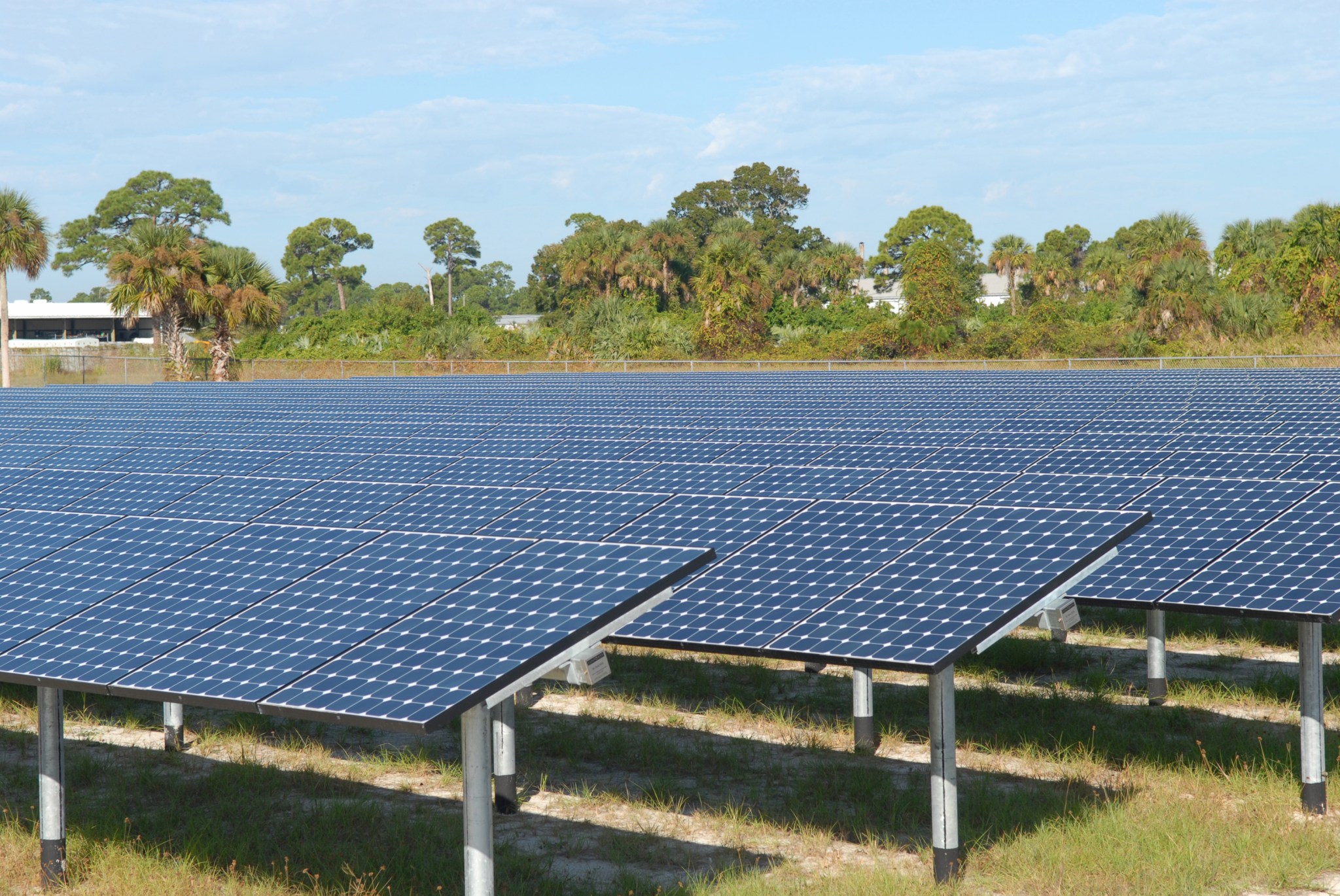Solar power generation at NASA’s Kennedy Space Center in Florida is about to improve as the center expands its ability to produce clean energy in an environmentally friendly manner. A new solar farm is already under construction and is expected to double Kennedy’s solar energy supply to four percent of the center’s total use, although that number grows to 18 percent and higher when accounting for electricity produced here that is sent into the power grid outside the center.
The eventual goal is to produce 30 percent of Kennedy’s energy consumption on the center through renewable processes by 2025, including electricity generated at Kennedy that is used elsewhere. In fact, the solar plant expansion will allow Kennedy to offset electricity costs from the Central Campus building uses, said Israel Marrero Figueroa, co-lead design engineer.
There are two solar farms at Kennedy: one in the Industrial area that produces 1 megawatt of power for the center’s use, and another a couple miles south that produces 10 megawatts of electricity for Florida Power and Light. FPL built both and maintains them. They were built in late 2009 and early 2010, respectively.
“It is achieving what we had hoped for, so it’s been a positive,” said Nick Murdock, Energy and Water program manager for Kennedy. “It helps offset our utility costs and it also works to meet our renewable energy generation goals. It’s been a success.”
Construction is underway on a new facility similar in size to the 1-megawatt plant. The addition is to open in December. Other expansions also are in planning stages. The center’s master plan accommodates several areas that could house new tracts of solar panels without impacting the wildlife refuge that shares the center’s grounds.
“The thing that I like is it’s a different project than we normally do,” said Samori Ball, project manager for the expansion work. “Now that prices have come down for the equipment, we can implement these plants to offset the power usage of an entire facility.”
In the years since the two solar power generation facilities began operating, poor weather has had little impact on their production, Murdock said.
“The storms come through and they don’t typically stick around,” Murdock said. “If anything, they help clear off the dust that accumulates on the panels. For hurricanes, we’ve not lost a single panel, they are really robust in their construction.”
Murdock said solar power is the most likely source of renewable energy generation at Kennedy for the foreseeable future because it has proven its effectiveness and is approved for use in the refuge. Other machinery such as wind-driven generators have been considered but not chosen, he said.
New technologies that improve solar efficiency also are increasingly available that offer more alternatives for placement in a wider number of areas and increase the amount of power produced.
“Solar’s probably the main thing in Florida because we don’t have a lot of wind, but we’ve got a lot of sun,” Ball said. He added that solar facilities like those used at Kennedy are easier to maintain because there aren’t many moving parts. The panels don’t track with the sun, but that doesn’t limit their power generation very much, he said.
As the center establishes more solar energy generation, large facilities are not expected to carry all the weight. Instead, numerous small-scale projects could be built instead in unused parking areas or on the roofs of some of Kennedy’s buildings. The Propellants North building established the feasibility of that approach with solar panels anchored on its roof and with an automotive canopy housing topped with photovoltaic cells in the parking lot.
With the canopy-based approach, the solar cells can be lit by the sun while providing shade to the cars that park beneath them. The saved energy from the day can also, in turn, power canopy lights at night or in bad weather. The canopies also can be equipped with charging stations for electric vehicles.
“Currently, we’re a leader to the agency and we hope to continue being a leader of solar power generation in combination of our own power generation and the larger scale projects we host,” Murdock said.



























